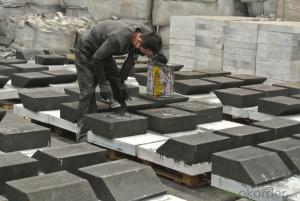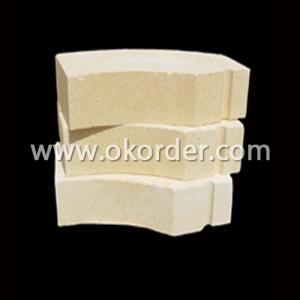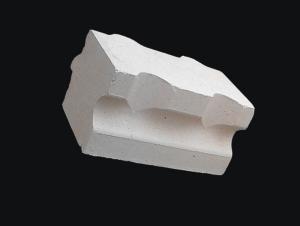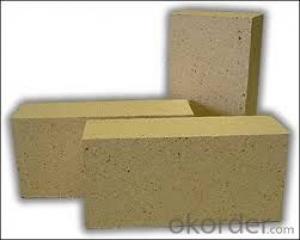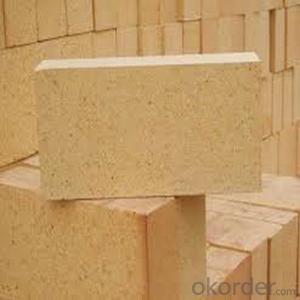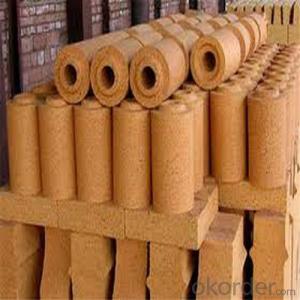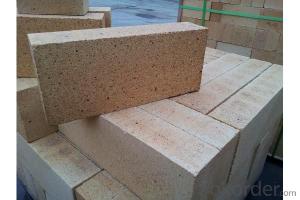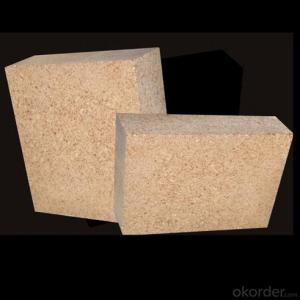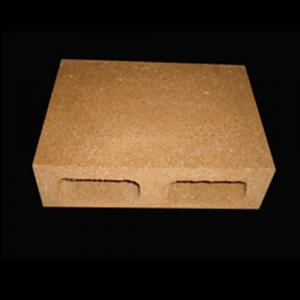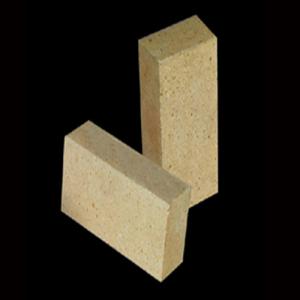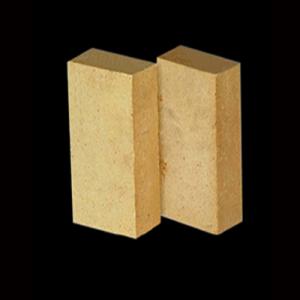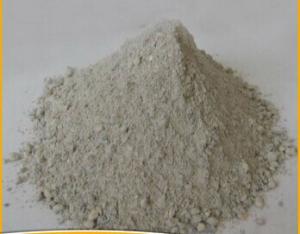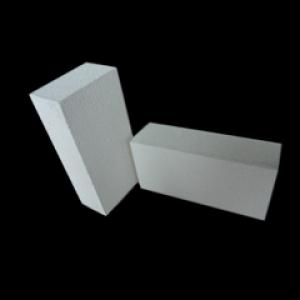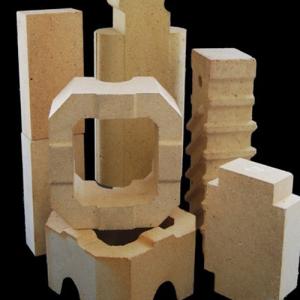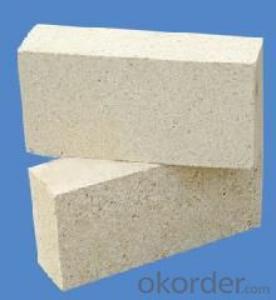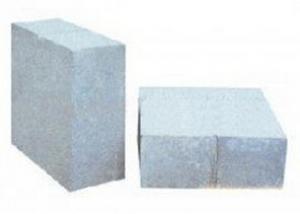Silicon nitride bonded silicon carbide products - steel industry
- Loading Port:
- Qingdao
- Payment Terms:
- TT OR LC
- Min Order Qty:
- 5 m.t.
- Supply Capability:
- 500 m.t./month
OKorder Service Pledge
OKorder Financial Service
You Might Also Like
Use: blast furnace bosh, bosh, lower stack, cooling wall, garbage incineration furnace, boiler
Features: good thermal shock resistance, high bending strength, abrasion resistance, high alkali resistance and slag erosion ability, linear expansion rate low, high coefficient of heat conductivity.
Product name
Silicon nitride bonded silicon carbide products
Chemical
composition(%)
SiC
≥72.0
Si3N4
≥22.0
Fe2O3
≤0.3
Display the porosity(%)
≤16.0
The volume density(g/cm3)
≥2.68
Compressive strength at room temperature (Mpa)
≥180.0
Flexural strength
(Mpa)
Normal atmospherictemperature
≥45.0
1400℃
≥55.0
Thermal conductivity
λ(W/m·K)
The experimental temperature
650℃
19.5
The experimental temperature
1000℃
17.2
Coefficient of temperature conductivity
α(cm2/s)
The experimental temperature
650℃
0.064
The experimental temperature
1000℃
0.053
Linear expansion rate
α30—1000
4.02×10-6(k-1)
α30—1100
4.06×10-6(k-1)
- Q:Application characteristics of high alumina brick
- Reheating line change. If the firing temperature of high alumina brick products is enough and the firing time is enough, the volume is stable, the change of the reheating line is small; on the contrary, the residual shrinkage of clay brick products is caused by recrystallization.
- Q:What are the specifications for bricks?
- Thecompressive node as a new type of building energy-saving wall materials, which can be used for masonry walls, but also has good thermal properties, in line with the construction of the building module, reduce the loss in the process of construction, improve work efficiency; the hole rate reached more than 35%, can reduce the weight of the wall, save the foundation engineering cost. Compared with common sintered porous brick, it has the characteristics of heat preservation, heat insulation, light weight, high strength and high construction efficiency. The product is made of shale as raw material. It is produced by high vacuum extrusion molding machine and one yard firing process
- Q:What materials are used for roof insulation?
- There are two kinds: one is a kind of cotton insulation board, such as rock wool board, aluminum silicate cotton board, but this is not environmental protection, harmful to life, foam board (this fire safety factor minimum), these relatively cheap.
- Q:Are there any differences between insulating bricks and refractory bricks?
- The refractoriness of insulating bricks is generally below 1400 tons, while the refractoriness of refractory bricks is above 1400 degrees. 3. density insulation bricks are generally lightweight insulation materials, the density is generally in 0.8-1.0g/cm3, and the density of refractory bricks are basically above 2.0g/cm3.
- Q:What are the reasons for the decline in the performance of high alumina bricks when we use high alumina refractory bricks?
- The brick Pei boring and time. 6, Pei brick kiln installed between the brick and the brick Pei order, Pei and kiln top, kiln wall gap etc.. 7, high alumina brick kiln plan, and the lack of edges and corners of the scene should be avoided.
- Q:What is the difference between metal compounds and metal solid solutions?
- Sigma phase belongs to Affirmative system, there are 30 atoms in the unit cell, two element alloy, sigma phase formation is related with the following conditions: (1) the atomic size difference, phase difference between the maximum sigma atomic radius of a tungsten cobalt, the atomic radius difference is 12%. (2) there is a set of cubic lattice elements (coordination number 8), and another component is face centered cubic or dense six square lattice (coordination number is 12). (3) appear in "average number of races" (s+d layer electron number) in the range of 5.7 ~ 7.5. The region of the presence of sigma in the two - element alloy is shown in table 3. In the three element system, the concentration and temperature range of the formation of the sigma phase are affected by the addition of third components. Usually in chromium stainless steel in Fe Cr phase, in Fe - Cr - Mn three yuan, sigma phase iron chromium and chromium can form Mn two element, when the addition of manganese in stainless steel, will promote the formation of sigma phase, and stabilizes the wide temperature range. Many of the Fe Cr alloy elements. The phase temperature range increases. In less than 820C stable Fe Cr phase, silicon promotes the formation of D phase and the stable temperature increased to 900 to 960 DEG C, manganese and molybdenum can improve the temperature stability of sigma phase to 1000 DEG C.
- Q:How much is one ton / ton of high alumina refractory brick?
- The price of high alumina refractory bricks is not equal, according to the quality index of GB2988-2012
- Q:What refractory material does cupola lining use?
- Materials defined as physical and chemical properties that allow them to be used in a high temperature environment are called refractory materials. Refractory materials are widely used in metallurgy, chemical, petroleum, machinery manufacturing, silicate, power and other industrial fields, the largest amount of metallurgical industry, accounting for 50% ~ 60% of the total output.
- Q:Which thermal shock stability of clay brick and high alumina brick is good?
- High alumina brick is made of superfine alumina, fused corundum and fused mullite as main refractory materials.
- Q:What is the heat preservation material used in a laboratory furnace?
- Silicon carbide (SiC) is made from quartz sand, petroleum coke (or coal tar), sawdust (green salt produced when adding green silicon carbide) and other raw materials by smelting with resistance furnace at high temperature. Silicon carbide also rare minerals in nature, Mo sangshi. Silicon carbide, also known as carbon silica. Silicon carbide is the most widely used and the most economical kind of refractory materials in C, N, B and other non oxide refractory materials. It can be called "carborundum sand" or "refractory sand".
1. Manufacturer Overview |
|
|---|---|
| Location | |
| Year Established | |
| Annual Output Value | |
| Main Markets | |
| Company Certifications | |
2. Manufacturer Certificates |
|
|---|---|
| a) Certification Name | |
| Range | |
| Reference | |
| Validity Period | |
3. Manufacturer Capability |
|
|---|---|
| a)Trade Capacity | |
| Nearest Port | |
| Export Percentage | |
| No.of Employees in Trade Department | |
| Language Spoken: | |
| b)Factory Information | |
| Factory Size: | |
| No. of Production Lines | |
| Contract Manufacturing | |
| Product Price Range | |
Send your message to us
Silicon nitride bonded silicon carbide products - steel industry
- Loading Port:
- Qingdao
- Payment Terms:
- TT OR LC
- Min Order Qty:
- 5 m.t.
- Supply Capability:
- 500 m.t./month
OKorder Service Pledge
OKorder Financial Service
Similar products
New products
Hot products
Related keywords
